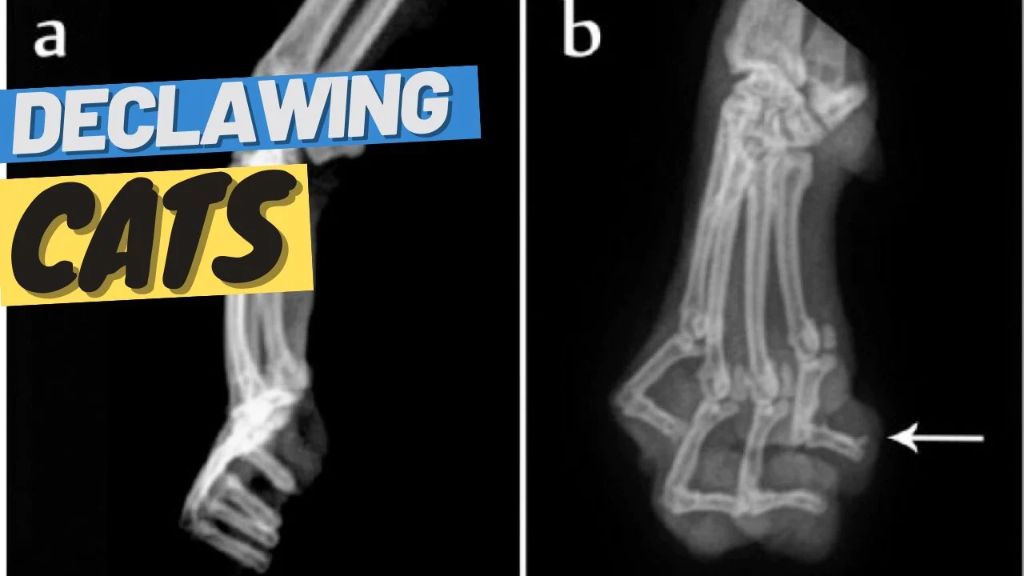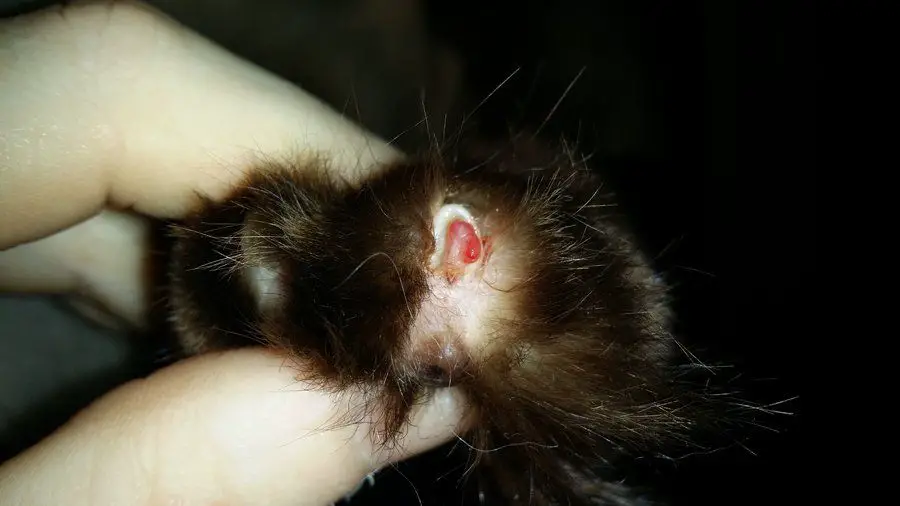The Allure of Cat Claws
For cat owners, those sharp claws invoke a mix of emotions. On one hand, they’re instrumental to a cat’s mobility and survival. On the other, they wreak havoc on furniture and tender skin. But what compels cats to flex and drag their claws on surfaces? Why do they need to scratch? And what happens when those claws get damaged?
This article takes a deep dive into the anatomy and growth cycle of cat claws. We’ll explore why they scratch, the effects of declawing, and what to do for damaged claws. Read on for insider information to help you understand and care for this important feline feature.
Anatomy of Cat Claws
A cat’s claws are made up of keratin, the same protein that makes up human fingernails (The Anatomy of A Cat Claw, 2023). The visible part of the claw that extends past the toe is called the unguis. Underneath the unguis is the dermis and epidermis, which together form the quick of the claw. The quick contains blood vessels and nerves that supply the claw with nutrients and sensation.
At the base of the claw is an area called the nail bed. This tissue forms the attachment between the claw and the last bone in the toe. The cuticle is a fold of skin that wraps around the top and sides of the nail bed, sealing and protecting it. Under the nail bed is the terminal phalanx bone which supports and anchors the claw.
The unguis and nail bed form the main functional parts of cat claws. The unguis provides a sharp point for scratching, climbing, capturing prey, and other functions. The nail bed gives structural support and attaches the claw firmly to the toe.
Growth Cycle
A cat’s claws go through a regular growth cycle where the old claw sheds and a new one grows to replace it. This growth cycle consists of four main stages:
1. Resting stage – The claw is dormant and not growing.[1]
2. Shedding stage – The old claw detaches and falls off as the new claw starts growing underneath.
3. Growing stage – The new claw quickly grows to its full length and hardness.
4. Hardening stage – The new claw finishes developing and hardens into a solid point.[1]
On average, cat claws go through this full regrowth cycle every 4-6 weeks. However, the shedding and growth happens gradually over time, not all at once. So you may notice loose bits of old claw shedding off while the new claw is still growing in.
This regular shedding cycle helps keep the claws sharp. It also allows the nail bed to renew itself and prevent excessive curling and thickening of the claw.
[1] https://blog.catbandit.com/do-cats-claws-grow-back-understanding-the-growth-cycle-of-cat-claws/
Declawing
Declawing is a surgical procedure in which a veterinarian removes the claw and end bone (phalanx) of a cat’s toes. It is also referred to as onychectomy or declaw surgery. Declawing effectively removes the cat’s claws so they are no longer able to scratch with their front paws.

Declawing is highly controversial. While some pet owners believe it can reduce undesirable scratching behavior, many animal welfare organizations actively oppose the practice. Declawing is considered inhumane in over 30 countries, including the UK, Australia and much of Europe. Critics argue it causes unnecessary pain and permanently maims the cat.
Potential negative effects of declawing include:
- Pain and lameness
- Infection
- Tissue necrosis
- Back pain from altered gait
- Behavioral problems from chronic pain
There are many humane alternatives to declawing that address undesirable scratching while allowing the cat to keep its claws.
Claw Damage

Cat claws can become damaged in various ways. Some common causes of claw damage include:
- Scratching on rough surfaces like concrete or brick, which can wear down and fray claw sheaths
- Getting claws caught on fabrics, carpets, or furniture, which can rip or tear claws
- Injuries from accidents or fights with other animals
- Medical conditions like infections or tumors affecting claw growth
- Overgrown claws that curve back into the paw pads
- Declawing procedures which remove the claw surgically
- Congenital deformities present at birth
Frequent claw damage can be painful for cats and lead to complications. It’s important for cat owners to provide appropriate scratching surfaces, monitor claw health, and get veterinary care if needed.
Regrowth After Injury
A cat’s claw can regrow after being damaged or torn off, but the regrowth process depends on several factors:
If the claw is torn or damaged but the root is still intact, it will usually regrow normally within several months. The new claw material originates from the germinal matrix at the base of the claw. As long as this tissue is undamaged, the claw can regenerate.[1][2]

However, if the entire claw is torn out, including the root and quick, regeneration may not occur. The germinal matrix must be present for the claw to regrow. Severe injuries where the toe bone is exposed typically prevent regrowth.
The age of a cat also impacts the regrowth process. Younger cats are more likely to regrow a damaged claw than older cats, since claw growth slows with age. Injuries to the quick may prevent normal regrowth as well.
Proper care of the damaged claw is crucial during regrowth. The area should be kept clean and bandaged until new nail material emerges. Signs of infection like swelling, redness, or pus require veterinary treatment. With proper care, most injured claws can regrow within a few months.
[1] https://wagwalking.com/cat/condition/torn-toenail
[2] https://vcahospitals.com/know-your-pet/first-aid-for-broken-nails
Care For Damaged Claws
If your cat’s claw is damaged, proper care is important to help it heal and prevent infection. Here are some tips for caring for a damaged claw:
Trim the claw if the break is clean and above the quick. Use sterile, sharp nail trimmers designed for cats. Trim just above the break to remove any ragged edges [1]. This helps prevent further splitting or catching on things.
Disinfect the claw to prevent infection. Gently clean around the break with mild soap and water, then apply a cat-safe disinfectant. Keep the area clean while it heals.
Bandage the paw if needed. Place a clean, dry gauze pad over the claw and loosely wrap the paw with a self-adhesive bandage. This protects the exposed nail bed. Change daily [2].
Watch for signs of infection like redness, swelling, oozing, or foul odor. See your vet promptly if you notice infection setting in.
Allow the claw to regrow naturally. With proper care, the claw should regrow on its own within several weeks. Avoid trimming the new growth until the claw has fully regenerated.
Prevent licking or chewing to avoid aggravating the injury. Use an Elizabethan collar if needed.
When To See A Vet
Cat claws generally grow back normally after an injury, but in some cases you may need to take your cat to the vet. Signs that a cat’s claw is not regrowing properly include:
- The new claw is growing in crooked or curved
- The claw is regrowing without a sheath to protect it
- Inflammation, redness, or swelling around the nail bed
- Bleeding from the nail that won’t stop
- Signs of infection like pus or foul odor
- Your cat is excessively licking or bothering the nail
- Lameness or difficulty walking due to nail pain
Veterinary treatment may include antibiotics, pain medication, surgical repair of the nail, or in severe cases, partial toe amputation. See your vet promptly if the claw regrowth appears abnormal so they can assess the nail and surrounding tissue for damage and infection.
Fostering Regrowth
If your cat’s claws become damaged or broken, there are things you can do at home to help them regrow healthy and strong:
Nutrition
Feeding your cat a high-quality diet with adequate protein and nutrients supports overall health and can aid claw regrowth. Look for cat foods rich in vitamins A, C, D, E, and biotin, along with minerals like calcium, phosphorus, and zinc.
Supplements
Some supplements are thought to help claw growth and strength when added to your cat’s diet. Talk to your veterinarian about gelatin, omega fatty acid, or glucosamine supplements.
Scratching Aids
Provide scratching posts, boards, and pads around your home. Scratching helps remove dead sheaths from claws and stimulates new growth. Vertical and horizontal scratchers of different materials give your cat options.
Conclusion

In summary, a cat’s claws are complex structures that grow in layers and shed periodically. Healthy claw regrowth requires adequate nutrition and care. Trimming claws regularly helps prevent overgrowth and splitting. Damaged claws can regrow if the root remains intact. However, declawing is an irreversible procedure that removes the entire claw. It can lead to pain, behavioral issues, and other long-term problems. Caring for your cat’s claws appropriately by providing proper scratching surfaces, nutrition, and veterinary care as needed encourages natural shedding and regrowth. Keeping your cat’s claws healthy is an important part of ensuring their comfort and wellbeing.

